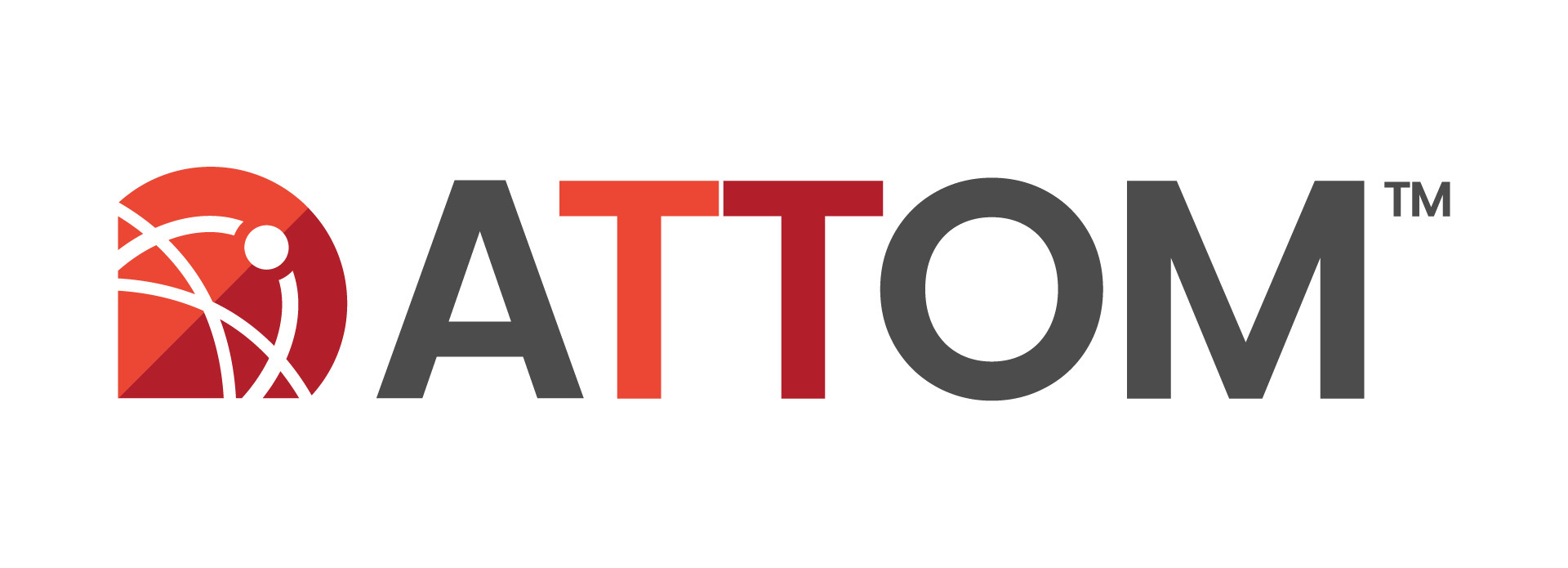Typical home sales profit margin fell to 50 percent, from peak of 64 percent in 2022; Home sales prices remain near historic highs
IRVINE, Calif., April 24, 2025 -- ATTOM, a leading curator of land, property data, and real estate analytics, today released its first quarter 2025 U.S. Home Sales Report, which shows that homeowners, on average, made a 50.2 percent profit selling single-family homes and condos during the first quarter of the year. That was down 3.2 percentage points from the previous quarter and down 4.8 percentage points from the first quarter of 2024.
The national median profit margin for home sales has declined slightly almost every quarter since the summer of 2022, but it still remains well above pre-pandemic levels.
The national median home sale price—whose historic peak was $358,000 in the third quarter of 2024—has held steady for the last two quarters at $355,000. However, the median raw profit that sellers made on their homes dropped about 4 percent from about $124,000 in the fourth quarter of 2024 to $119,000 in the first quarter of 2025.
"Sellers may not be enjoying quite the same windfall they were a few years ago but by historical standards profits are strong, both in terms of margins and raw dollar value," said Rob Barber, CEO for ATTOM. "The first quarter also tends to be the weakest of the year, so don't be surprised to see profits regain ground during the summer months."
He added that "the dip in profits has affected homes across the price spectrum and country, but several communities in Florida and California saw the biggest drop offs."
Profit margins slip in more than three quarters of metro markets
Compared to the fourth quarter of 2024, typical profit margins dropped in 99 (77 percent) of the 128 metropolitan statistical areas that had at least 1,000 home sales during the first quarter of 2025. Typical profit margin is the percent difference between the median purchase price and median resale price for homes in an area. Compared to the same time last year, typical profit margins fell in 106 (83 percent) of the 128 metro areas.
The biggest year-over-year decreases in typical profit margins during the first quarter of 2025 came in Punta Gorda, FL (down from 106.3 percent to 69.2 percent); Ocala, FL (down from 99.9 percent to 66.7 percent); Deltona, FL (down from 81.6 percent to 54 percent); Bakersfield, CA (down from 81.1 percent to 58.9 percent); and Spartanburg, SC (down from 49.4 percent to 29.6 percent).
The largest year-over-year increases in typical profit margins for the first quarter of 2025 were in Toledo, OH (up from 27.8 percent to 44.7 percent); Birmingham, AL (up from 24.9 percent to 35.1 percent); Canton, OH (up from 43.8 percent to 53.1 percent); Syracuse, NY (up from 56.8 percent to 62.3 percent); and Youngstown, OH (up from 64.7 percent to 70 percent).
Among metro areas with populations over 1 million, the biggest year-over-year decreases in typical profit margins were in San Jose, CA (down from 105 percent to 88.8 percent); Tampa, FL (down from 73.9 percent to 59.1 percent); Fresno, CA (down from 75 percent to 60.8 percent); San Francisco, CA (down from 78.3 to 64.3 percent); and Jacksonville, FL (down from 59.6 percent to 47.4 percent).
And among those largest metro areas, including Birmingham, AL the biggest year-over-year improvement in typical sales profit margins came in Chicago, IL (up from 41.9 percent to 45.2 percent); Buffalo, NY (up from 79.1 percent to 82.2 percent); Cleveland, OH (up from 52.9 percent to 55.4 percent); and Virginia Beach, VA (up from 37.8 percent to 39.8 percent).
Nearly two thirds of metro markets saw investment returns over 50 percent
Despite the profit margins shrinking nationwide, home sellers are still seeing comparatively high returns on their investments. Of the 128 metro areas in our analysis, 77 (60 percent) had typical sales profit margins at or above 50 percent.
Among metro areas with at least 1 million residents, the highest typical profit margins were in San Jose, CA (88.8 percent); Buffalo, NY (82.2 percent); Seattle, WA (75.3 percent); Providence, RI (74.1 percent); and Boston, MA (73.9 percent).
Of the largest metro areas, the lowest typical profit margins were in New Orleans, LA (18.1 percent); San Antonio, TX (24.5 percent); Dallas, TX (29.7 percent); Austin, TX (32.7 percent); and Houston, TX (35 percent).
Raw profits hold steady year over year
Compared to the same time last year, the national typical raw profit on home sales—the median dollar amount difference between how much sellers purchased homes for and how much they sold them for—stayed essentially the same at just below $119,000.
However, some metro areas saw significant changes in the typical raw profit from sales. Of the 128 metro areas analyzed, 74 (58 percent) saw typical raw profits drop year-over-year.
Among metro areas with populations over 1 million, the biggest year-over-year decrease in raw profit came in New Orleans, LA (down 27.6 percent); Dallas, TX (down 17.8 percent); Tampa, FL (down 15 percent); Jacksonville, FL (down 14.2 percent); and Austin, TX (down 13 percent).
Still, 79 (62 percent) of the 128 metro areas had typical raw profits that exceeded $100,000, with coastal cities, particularly in California, leading the way.
The metro areas with the largest typical raw profits in the first quarter of 2025 were San Jose, CA ($710,000); San Francisco, CA ($411,000); San Diego, CA ($360,000); Los Angeles, CA ($340,000); and Oxnard, CA ($317,050).
The metro areas with the smallest typical raw profits were New Orleans, LA ($38,000); Baton Rouge, LA ($42,500); Springfield, MO ($44,936); Toledo, OH ($49,689); and Birmingham, AL ($50,800).
National median home values remain historically high
The national median home sales price hit a record high of $358,000 in the third quarter of 2024. Since then, it has dropped slightly—about 0.8 percent—but is still 6 percent higher than it was at the end of the first quarter in 2024.
The typical sales value grew year-over-year in 85 percent of the metro markets analyzed, and quarter-over-quarter in 26 percent of the metro markets.
The metro areas that saw the largest year-over-year increase in typical sales prices were Syracuse, NY (up 18.8 percent to $214,950); Toledo, OH (up 18.5 percent to $160,000); Kansas City, MO (up 16.1 percent to $290,203); St. Louis, MO (up 14.3 percent to $240,000); and Dayton, OH (up 14.3 percent to $200,000).
The metro areas with the biggest year-over-year decreases in typical sales prices were Cape Coral, FL (down 9 percent to $355,000); Sarasota, FL (down 6 percent to $430,278); Boise City, ID (down 5.2 percent to $448,941); Punta Gorda, FL (down 4.5 percent to $315,000); and Tampa Bay, FL (down 3.4 percent to $350,000).
Historical Median Home Sales Prices
Owners are waiting longer to sell
The average amount of time owners hold onto a home before selling it has been steadily increasing since 2006. For homes sold in the first quarter of 2025, the average amount of time between purchase and sale was 8.12 years, the same amount of time as in the fourth quarter of 2024 but almost six months longer than homes sold in the first quarter of 2024.
The average length of ownership between sales increased quarter-over-quarter in 59 (52 percent) of 114 metro areas with sufficient data to analyze. Year-over-year, the average length of ownership increased in 96 metro areas (84 percent).
The metro areas with the longest ownership tenure for homes sold in the first quarter of 2025 were Barnstable, MA (14.8 years); New Haven, CT (13.1 years); Eureka, CA (12.9 years); Bridgeport, CT (12.6 years); and Torrington, CT (12.2 years).
The metro areas with the shortest average ownership tenures were Provo, UT (6.2 years); Crestview, FL (6.8 years); Oklahoma City, OK (6.9 years); Austin, TX (6.9 years); and Kansas City, MO (7 years).
Average U.S. Homeownership Tenure
Lender-owned sales tick up
Home sales following foreclosures by banks and other lenders accounted for 1.5 percent of all home sales nationally in the first quarter of 2025, a slight increase over the 1.3 percent rate posted in the previous two quarters. The proportion of homes sold by lenders has been trending down since it hit a high of 30.1 percent in 2009, amid the great recession the rate has been under 2 percent since the second quarter of 2021.
Among the metro areas with sufficient data to analyze, the areas with the largest proportion of lender-owned sales were Peoria, IL (9.1 percent); Honolulu, HI (6.2 percent); Baton Rouge, LA (4.7 percent); Syracuse, NY (4.1 percent); and Flint, MI (4.1 percent).
Cash sales hit highest point in two decades
All-cash transactions accounted for 42 percent of home sales in the first quarter of the year, up from 38.3 percent in the previous quarter and the highest proportion since 2014.
Among metro areas with sufficient data, the areas with the largest proportion of all-cash sales were Claremont, NH (69.2 percent); Macon, GA (67.5 percent); Naples, FL (66.4 percent); Warner Robins, GA (65.3 percent); and Gainesville, GA (64.6 percent).
The areas with the smallest proportion of all-cash sales were Charleston, WV (17.1 percent); Olympia, WA (22.7 percent); Cedar Rapids, IA (25.1 percent); Hagerstown, MD (25.3 percent); and Vallejo, CA (25.4 percent)
Institutional sales also ticked upwards
Homes sold by institutional investors accounted for 6.3 percent of sales during the first quarter of 2025, up from 6.1 percent the previous quarter and reversing a recent trend. Sales by institutional investors had been steadily falling since 2022 prior to the slight increase.
The metro areas with the largest proportions of institutional investor sales were Birmingham, AL (16.6 percent); Memphis, TN (14.1 percent); Indianapolis, IN (11.2 percent); Fayetteville, NC (11.2 percent); and Kansas City, MO (11.2 percent).
FHA-financed purchases down slightly
Nationwide, 8.3 percent of home purchases were made using Federal Housing Administration (FHA) loans. That was down from 8.6 percent of purchases in the previous quarter and at the same time last year.
The metro areas with the highest rate of FHA loan assistance in the first quarter of 2025 were Merced, CA (24.4 percent); Lakeland, FL (23 percent); Visalia, CA (21.9 percent); Bakersfield, CA (21.6 percent); and Yakima, WA (21.1 percent).
Report methodology
The ATTOM U.S. Home Sales Report provides percentages of REO sales and all sales that are sold to institutional investors and cash buyers, at the state and metropolitan statistical area. Data is also available at the county and zip code level, upon request. The data is derived from recorded sales deeds, foreclosure filings and loan data. Statistics for previous quarters are revised when each new report is issued as more deed data becomes available.
Definitions
All-cash purchase: sale where no loan is recorded at the time of sale and where ATTOM has coverage of loan data.
Homeownership tenure: for a given market and given quarter, the average time between the most recent sale date and the previous sale date, expressed in years.
Home seller price gains: the difference between the median sales price of homes in a given market in a given quarter and the median sales price of the previous sale of those same homes, expressed both in a dollar amount and as a percentage of the previous median sales price.
Institutional investor purchases: residential property sales to non-lending entities that purchased at least 10 properties in a calendar year.
REO sale: a sale of a property that occurs while the property is actively bank owned (REO).
About ATTOM
ATTOM powers innovation across industries with premium property data and analytics covering 155 million U.S. properties—99% of the population. Our multi-sourced real estate data includes property tax, deed, mortgage, foreclosure, environmental risk, natural hazard, neighborhood and geospatial boundary information, all validated through a rigorous 20-step process and linked by a unique ATTOM ID.
From flexible delivery solutions—such as Property Data APIs, Bulk File Licenses, ATTOM Cloud, Real Estate Market Trends—to AI-Ready datasets, ATTOM fuels smarter decision-making across industries including real estate, mortgage, insurance, government, and more.
This News is brought to you by Qube Mark, your trusted source for the latest updates and insights in marketing technology. Stay tuned for more groundbreaking innovations in the world of technology.









